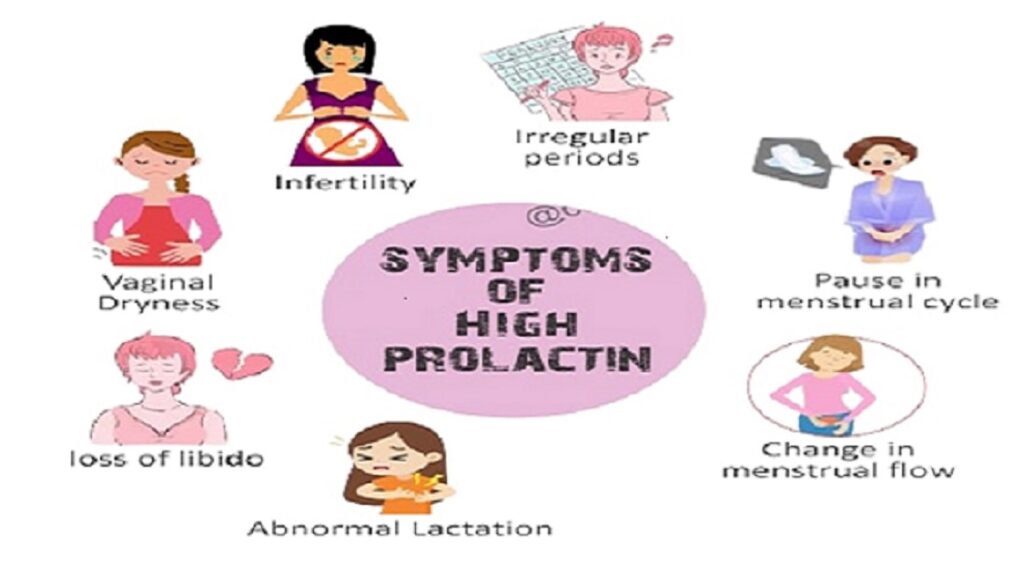One medicine that has garnered a lot of interest for its capacity to regulate prolactin levels in hyperprolactinemia is cabergoline 0.25 mg. The pituitary gland secretes the hormone prolactin, which controls reproduction and lactation among other things. This article discusses the benefits of using 0.25 mg of cabergoline to control prolactin. We go over everything from the drug’s functioning to its efficacy in treating hyperprolactinemia and other prolactin-related disorders to its possible adverse effects, how to take it, how it compares to other drugs, what patients have to say about it, and what the future holds for cabergoline therapy research. We think that readers will have a better grasp of cabergoline’s value in hormone management and the treatment of diseases associated to prolactin if we provide a thorough explanation of the drug’s role in hormone regulation.
The Definitive Resource on Prolactin and What It Does
Nursing and reproduction rely on prolactin, a hormone secreted by the pituitary gland. Nevertheless, hyperprolactinemia and other issues may arise from this hormone’s aberrant functioning on rare occasions.
An Explanation of How 0.25 mg of Cabergoline Works
The plot of this hormone dysregulation narrative revolves on 0.25 mg of cabergoline. Because of its status as a dopamine agonist, this medication inhibits the generation of prolactin. Putting a stop to your body’s excessive lactation system is a good comparison.
Determination of Hyperprolactinemia
Hyperprolactinemia has the potential benefit of making one seem like they may be a candidate for a milk commercial. Signs may include an abnormal menstrual cycle, decreased libido, and an inability to produce enough breast milk while pregnant.
Research showing that cabergoline is beneficial in a clinical setting
Fortunately, Cabergoline comes swooping in like a luminous knight to save the day. This medication effectively lowers prolactin levels, which helps with symptom alleviation and hormonal balance, according to the study. Let the dance floor fill up with energy.
Medical Issues Resolved by Cabergoline
The skill set of Cabergoline is broad. Hyperprolactinemia isn’t the only condition it may cure; prolactinomas are benign tumors of the pituitary gland and it can also help with infertility symptoms brought on by elevated prolactin levels.
Treating Prolactin-Related Disorders with Cabergoline
If you suffer from irregular periods or low libido, or any other prolactin-related ailment, cabergoline is a great treatment option. In other words, you play a pivotal role in your own endocrine system.
The Cabergoline Side Effects That People Experience The Most
As a hormonal sorcerer, caffeine does have a few quirks. Nausea, vertigo, and headaches are common side effects, but they’re all fixable with some food and some Netflix.
Cabergoline Use and Risk of Serious Adverse Effects Occasional
On rare occasions, cabergoline might cause more serious side effects, including trouble with the heart valves or mental health. Keep a watch out for any changes that might be hazardous, and always see your doctor if you observe anything out of the ordinary.
In conclusion, this is an excellent exploration of the bizarre realm of prolactin regulation and Cabergoline therapy, replete with hormonal mayhem and medical marvels. A little humor never hurts when it comes to health care, and knowledge is power.
Cabergoline Treat high concentration of the hormone prolactin in the blood is known as hyperprolactinemia. During breastfeeding, the pituitary gland releases the hormone prolactin, which primarily boosts milk production. Among the many health issues that may arise from an abnormal rise in prolactin levels are menstrual cycle abnormalities, infertility, and erectile dysfunction. Cabergoline eliminates these issues by regulating prolactin levels.
Dosage Guidelines for Cabergoline Depending on the Ailment
Cabergoline dosage recommendations could change depending on the patient’s condition. Usually, 0.25 mg of cabergoline taken twice weekly is the starting dose for hyperprolactinemia. However, the dosage will be adjusted by your doctor based on your specific needs and the drug’s effect on your body.
Timetables and Methods for Efficient Administration
The administration of cabergoline is simple. Following your healthcare provider’s dosage and schedule recommendations is of the utmost importance, regardless of whether you take the medication with or without meals. If you want your medication to work as intended, you must take it precisely as directed and never skip a dosage.
A Review of Cabergoline and Its Rivals as a Prolactin Regulator
Aside from cabergoline, quinagolide and bromocriptine are the other medications that may lower prolactin levels. Discuss the pros and cons of each option with your doctor to help you pick the right medication.
A Critical Review of Cabergoline in Light of Its Interactions with Non-Conventional Treatments
Cabergoline is preferable to bromocriptine due to its extended half-life and less side effects. The cost, however, might end up being more. Take the time to weigh the benefits and drawbacks of each medication alternative among your treatment choices before settling on a course of action.
First-Held Accounts of Success with Cabergoline
When it comes to reducing prolactin levels and relieving problems like irregular periods and infertility, many users have found that cabergoline is helpful. The potential benefits of cabergoline therapy may be better understood with the aid of these anecdotes.
Cabergoline: Making the Right Choices and Improving Quality of Life
Many patients report an improvement in their quality of life after using cabergoline, which helps them recover control of their prolactin levels. For those who are trying to conceive again or who are experiencing symptoms like a decrease in breast milk supply, cabergoline has been a godsend for prolactin-related diseases.
Research & Clinical Trials Looking at Cabergoline Right Now to See If It Has Any Future Use
Cabergoline is known for its function in regulating prolactin, although researchers are always seeking for new applications for it. Researchers are investigating its potential use in many ailments and illnesses, including Parkinson’s and mood disorders, suggesting that it may hold promise as a future alternative to therapy.
Potentially Ground-Breaking Approaches to Cabergoline and Related Disorders
With the passage of time, more advancements in cabergoline research might be feasible. New formulations of cabergoline with increased efficacy and individualized dosing plans have the potential to improve the treatment and management of many medical conditions in the future.
Lastly, for those who are experiencing problems associated to prolactin, cabergoline 0.25 mg is a great therapeutic substitute. It shows promise as a hormone stabilizer and health booster. As a result of its effectiveness, low toxicity, and ongoing study, cabergoline has become the gold standard for prolactin management. When people have all the information they need regarding the pros and cons of cabergoline, they can make better decisions for their health.


